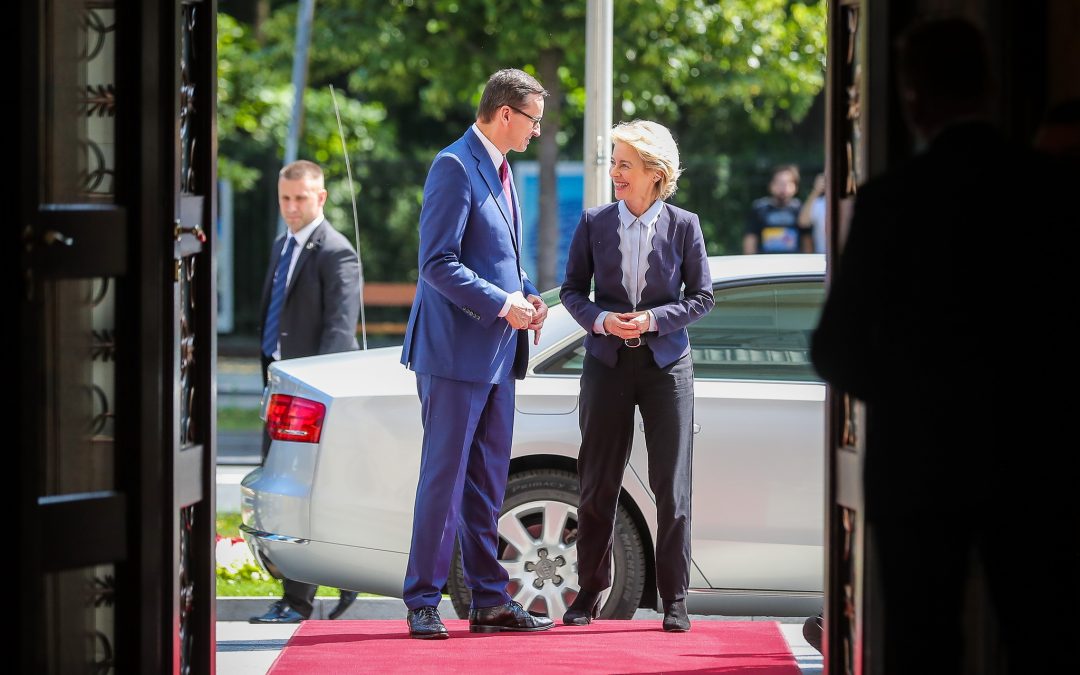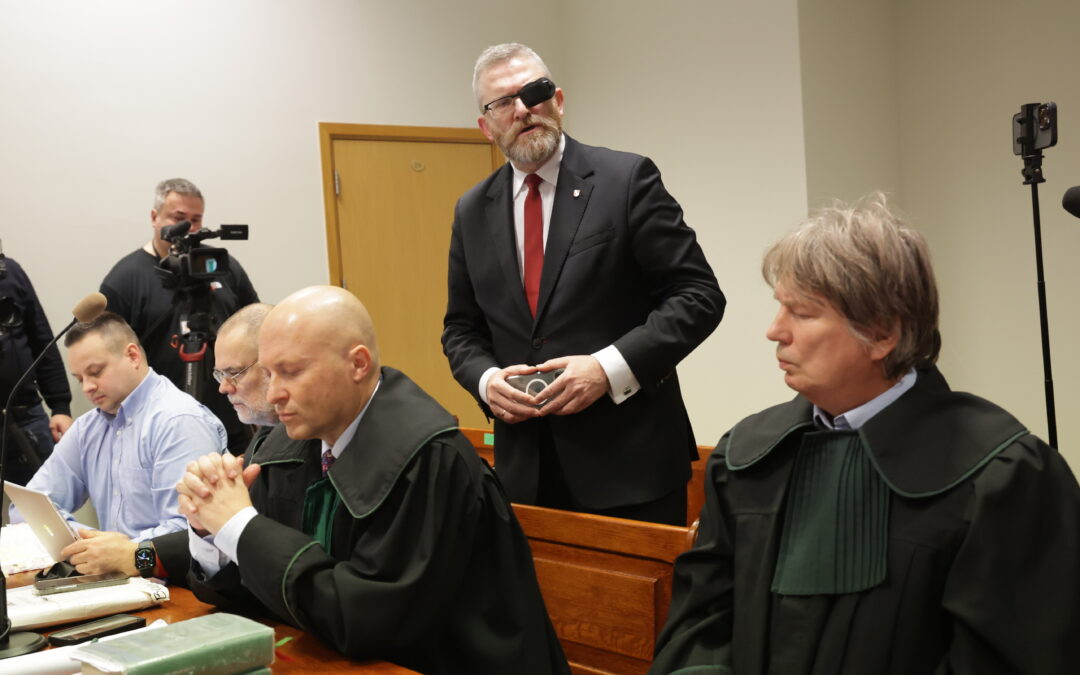By Krzysztof Izdebski
This article is published in cooperation with the ideaForum of the Batory Foundation.
Poland’s recovery and resilience plan – the European Union’s name for Covid recovery fund spending – has been accepted.
Leaving aside debates over whether the European Commission acted correctly in approving the funds despite rule-of-law concerns, pressure must be put on the Polish government to introduce mechanisms guaranteeing that information about the spending of the funds will be transparent and accessible to citizens.
It is also crucial for the work on reforms introduced as part of the plan to include mechanisms guaranteeing the participation of citizens and civil society organisations.
The Sejm has passed a bill to eliminate the disciplinary chamber for judges
It removed amendments made by the opposition-controlled Senate and some experts warn that without these it may not meet the milestones agreed with the EU to unblock Poland's funds https://t.co/AUWMfjgOZI
— Notes from Poland 🇵🇱 (@notesfrompoland) June 10, 2022
As a reminder, the Recovery and Resilience Facility is a historic intervention on the part of the EU, under which member states will receive a combined total of €672.5 billion by 2026 to help mitigate the economic and social consequences of the pandemic. Poland is to receive almost €36 billion in grants and loans.
The major delays in the process of acceptance of its plan and the fact that Poland cannot expect to receive an advance payment mean that the money is to be paid in arrears, after the milestones described in its national plan are reached.
This might appear to be a major safeguard against inappropriate spending, but in fact it means that the European Commission is attaching greater importance to the milestones than to spending itself. According to the regulation introducing the funding mechanism, only occasional audits on spending are to take place.
This is why it is so important for transparency mechanisms to be introduced now on the spending of all funds associated with implementation of the programme.
Transparency and participation are key
Such large amounts of money transferred to member states in such a short timeframe mean that open, transparent spending of funds is fundamental for ensuring that the many interested parties can monitor these funds effectively. Transparency will help to guarantee that the money is spent appropriately and that the EU’s financial interests are suitably protected.
This is particularly important as the European Commission has paid very little attention to specifying a framework for transparency in spending. Member states therefore have greater responsibility not only to spend the money effectively, but also, as much as possible, for the mechanism for spending it to be subject to the scrutiny of media and civil society organisations.
Since many reforms – such as those concerning climate and energy policy – will be important for the whole of society, and the Polish government’s previous actions in this respect have left much to be desired, experts and civil society organisations must have room to express their views on their directions.
This is not just about having people in a committee monitoring implementation of the programme, but the genuine opportunity for participation in creating concrete policies.
It is worth noting in this context that one of the milestones is reform of the legislative process. Legislation prepared by MPs will also have to contain a regulatory impact analysis, and the possibility of rapid processing of bills is to be restricted. Nevertheless, participation mechanisms should also be developed and implemented at the level of the ministries responsible for implementing specific reforms.
Don’t be ashamed to talk about money
All that is needed for mechanisms implementing transparency of spending and including citizens in creation of reforms is political will. Many other countries have either already developed or are developing their own methods for increasing the transparency of spending from the fund or including citizens in putting their national programmes into practice.
Among the countries working on solutions guaranteeing transparency of expenditure are Italy, Romania, Lithuania, Portugal and France.
One idea is clear indication of which public contracts come from the recovery plan. This would involve adding to the existing data describing the public procurement process information that contracts are funded entirely or partially from the Recovery and Resilience Facility or is part of implementation of the programme.
How transparent will Member States be about their multi-billion € spending from the massive EU Recovery and Resilience Facility? Too many countries, including Austria, are not planning to have adequate transparency and disclosure mechanisms. https://t.co/32rFDuVWne pic.twitter.com/2nG2B7f1aD
— Mathias Huter (@mathiashuter) June 15, 2021
It is important for such information to be published in an open data format, allowing it to be downloaded, machine-read and used in third-party tables. This would allow journalists and activists to independently verify whether, for example, the same companies were winning bids for purchases from the funds.
Furthermore, the Italian anticorruption agency is working on a database containing information on all spending from the recovery fund – including money distributed outside the public procurement system, for example in the form of grants or spending below the EU threshold.
In the latter case, the obligation for public sector entities to publish registers of contracts, established recently in Poland, represents an opportunity for transparency of funds for the activities described in the programme.
It looks likely that the register will in fact be published in January 2023 rather than July this year, with the amount over which contracts are published rising from 500 to 5,000 zloty.
What remains unchanged, however, is the rules requiring public entities to give the source of funding for the contract. But it is important to ensure that this does not just mean the general term “European funds”, but a precise reference to the programme from which the spending comes.
In this case, it should be made clear that the source is the recovery plan for Europe, ideally giving the name and number of the specific action described in the programme. A similar solution can also be applied for grant contests.
New analysis by the newly-formed Open Procurement EU Coalition finds EU’s Recovery and Resilience Facility spending at risk due to lack of transparency. Read more: https://t.co/L2uaRwCUZG #OpenProcurementEU pic.twitter.com/lkAxJsk1DX
— Open Contracting (@opencontracting) June 15, 2021
An ideal solution for transparency of spending from the recovery fund would be following such countries as Portugal and Lithuania by creating a uniform database providing full details of the recipients of these EU funds.
Include organisations in creation and implementation of reforms
Increased participation of civil society organisations in the process of putting reform projects into practice is an important element of their implementation in many EU countries.
The need to involve civil society organisations in national recovery and resilience plans was noted recently by the European Economic and Social Committee.
At a conference after publication of the committee’s resolution on this matter, its president Christa Schweng said that “involving organised civil society in the reforms set up in the National Recovery and Resilience Plans is a must for improving the quality, the transparency and the implementation of new policies”.
The text of a document published in May offers a set of proposals for practical solutions that are either already operational or planned.
The Italian government has set up a special council comprising representatives from organisations and the authorities who will, in the form of subgroups dealing with specific reforms, not only monitor politicians’ actions, but also have a significant influence on the final shape of policies.
[Opinion] #NextGenerationEU: Where is the transparency in the EU €2 trillion recovery? Ask @o_vardakoulias and @jt_christophe | Euobserver https://t.co/Say23bGTQy
— PubAffairs EU News & Debates 🇪🇺 (@PubAffairsEU) December 22, 2021
A similar mechanism has been adopted for collaboration with local government authorities. The authors of the resolution also indicate that various social actors should be evenly involved in implementation of reforms.
In Spain, meanwhile, although NGOs are not satisfied with the cooperation model, employers’ and trade union organisations are citing examples of agreements entered into with the government regarding labour market reform.
One good idea that is easy to put into practice is to appoint working groups in ministries responsible for concrete solutions. Poland might follow the example of Croatia, where NGOs are invited to participate in putting together tenders as part of the programme.
Importantly, however, since one of the objectives of the fund is also to support local authorities, any such groups set up in Poland should not be “Warsaw-centric”. By holding meetings remotely, various groups, such as local environmental organisations, could get involved in their work.
Some countries, such as the Czech Republic and Estonia, have set up websites providing information about the progress of implementation of the programme and inviting civil society organisations to submit their views on the direction of the reforms. There are no technological barriers to stop such a mechanism being created in Poland too.
All that is needed is political will
Such solutions do not require either major financial investment or a great deal of work. What is important is for the authorities to treat the subject seriously and honestly. They too stand to benefit from introducing mechanisms for transparency and cooperation with organisations.
This is because it takes away from the opposition and government critics the argument that money from the recovery fund will be wasted or its objectives will not be fully met.
Templates for how to improve the situation are already available from other countries. The ball is now in the government’s court.
Translated by Ben Koschalka
Main image credit: Mateusz Kostrzewa / KPRM





















